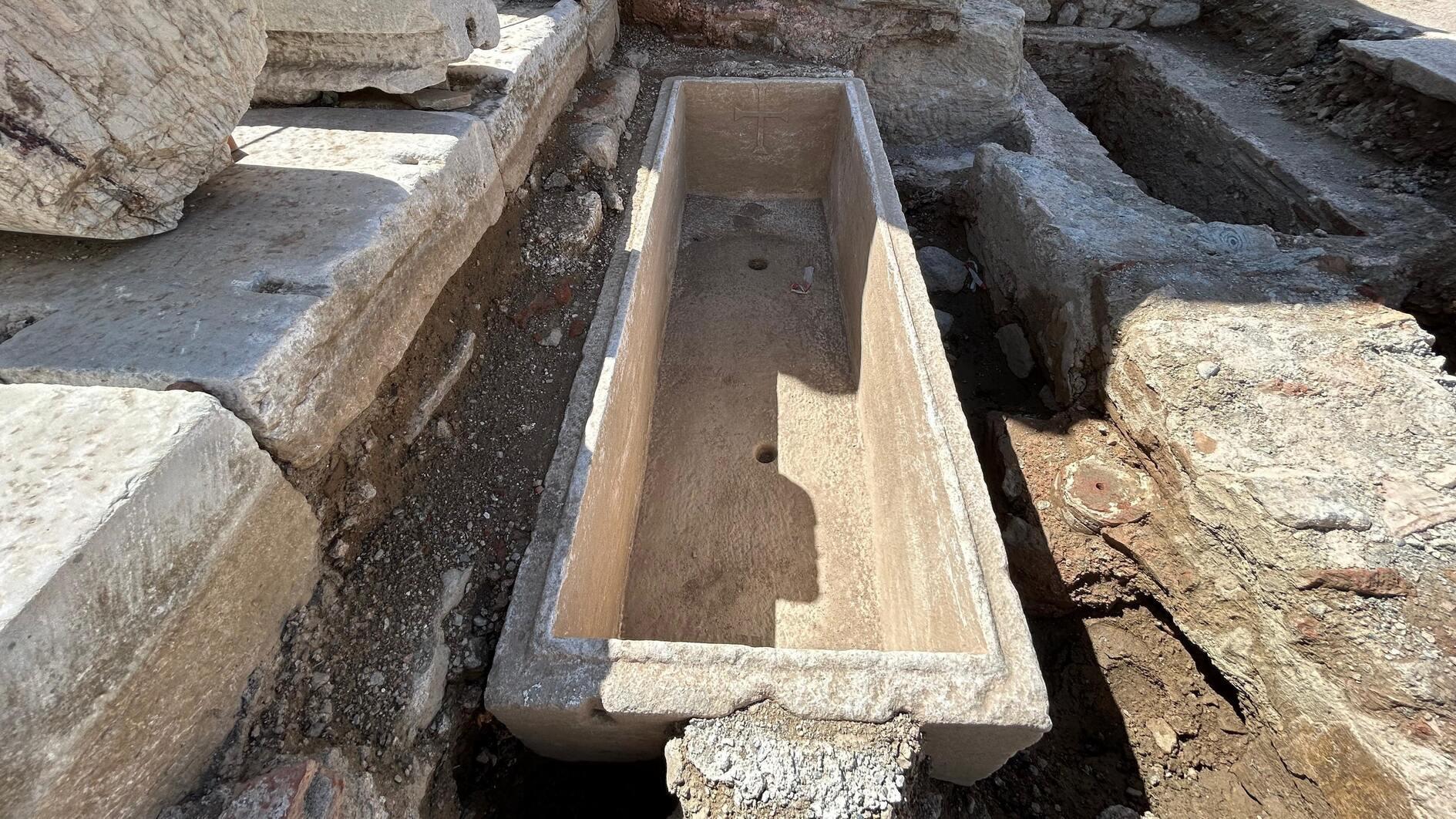
Archaeologists have uncovered a rare sarcophagus, believed to belong to a Roman gladiator named Euphrates, at Ayasuluk Hill in the western province of İzmir.
The sarcophagus, dating to the 3rd century B.C., was found containing the remains of 12 individuals, buried in the 5th century AD.
According to Sinan Mimaroğlu from Hatay Mustafa Kemal University, who is overseeing the excavation, the discovery of the sarcophagus sheds new light on ancient burial practices throughout centuries.
“There is a beautiful inscription of the sarcophagus which indicates it belonged to the Roman gladiator Euphrates,” Mimaroğlu revealed, adding that three crosses had been carved on the inside of the sarcophagus during the 5th century when it was reused for burial.
“The fact that this sarcophagus was reused centuries later during the Christian era shows the complex layers of history that exist in the area.”
The excavation team also uncovered traces of a water channel, a funnel system and mosaics located just beneath the surface.
“We found three sarcophagi and three cross-shaped graves in the area, one of which contained these 12 individuals,” Mimaroğlu said.
The discovery points to a mass burial, likely involving upper-class citizens or clergy members, as the elaborate tomb suggests.
The team has been investigating the Church of St. John in the South Cross branch, which dates to the 5th century A.D. Initial construction began with a modest tomb structure, which was later expanded into a grand basilica during the reign of Justinian I in the 6th century.
Stating that in 2023, his team conducted georadar work in the area, Mimaroğlu emphasized that there were also soundings conducted by Hörmann. “We excavated a larger area to confirm his data. A marble floor belonging to the 1st Justinian period was revealed. The ones uncovered this year have been proven to be the flooring belonging to the 5th century.”
Mimaroğlu said that they were able to prove with archaeological data that the mosaic on the lower floor was broken off and placed here in the period after Justinian I.
The sarcophagus was discovered alongside other important finds, including ceramics from the Early, Middle and Late Bronze Ages.
With ongoing excavations continuing under Mimaroğlu’s supervision, the team hopes to uncover even more about the rich cultural and historical heritage of Ayasuluk Hill.